Detection of Dataset Shifts in Learning-Enabled Cyber-Physical Systems using Variational Autoencoder for Regression
Apr 14, 2021Feiyang Cai, Ali I. Ozdagli, Xenofon Koutsoukos

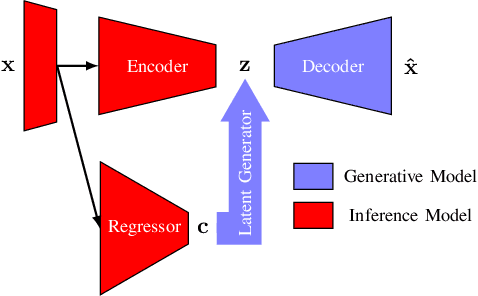
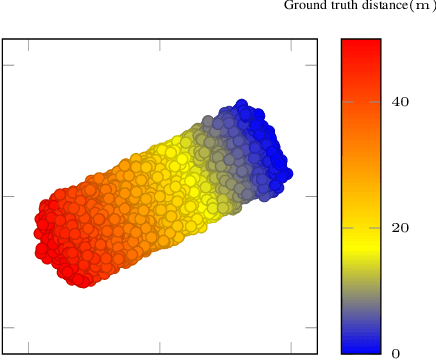
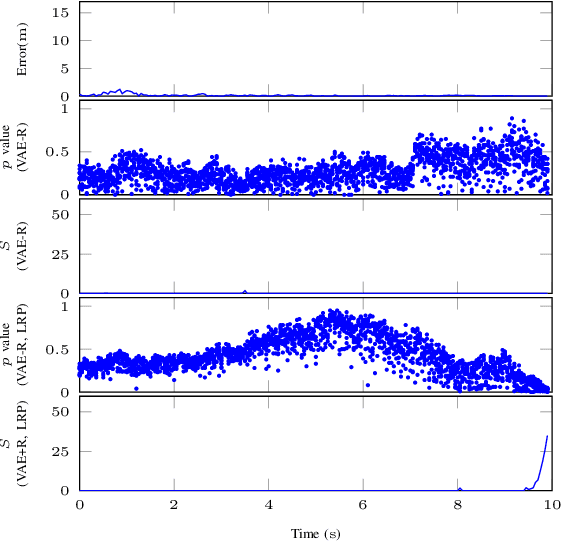
Cyber-physical systems (CPSs) use learning-enabled components (LECs) extensively to cope with various complex tasks under high-uncertainty environments. However, the dataset shifts between the training and testing phase may lead the LECs to become ineffective to make large-error predictions, and further, compromise the safety of the overall system. In our paper, we first provide the formal definitions for different types of dataset shifts in learning-enabled CPS. Then, we propose an approach to detect the dataset shifts effectively for regression problems. Our approach is based on the inductive conformal anomaly detection and utilizes a variational autoencoder for regression model which enables the approach to take into consideration both LEC input and output for detecting dataset shifts. Additionally, in order to improve the robustness of detection, layer-wise relevance propagation (LRP) is incorporated into our approach. We demonstrate our approach by using an advanced emergency braking system implemented in an open-source simulator for self-driving cars. The evaluation results show that our approach can detect different types of dataset shifts with a small number of false alarms while the execution time is smaller than the sampling period of the system.
Byzantine Resilient Distributed Multi-Task Learning
Oct 25, 2020Jiani Li, Waseem Abbas, Xenofon Koutsoukos

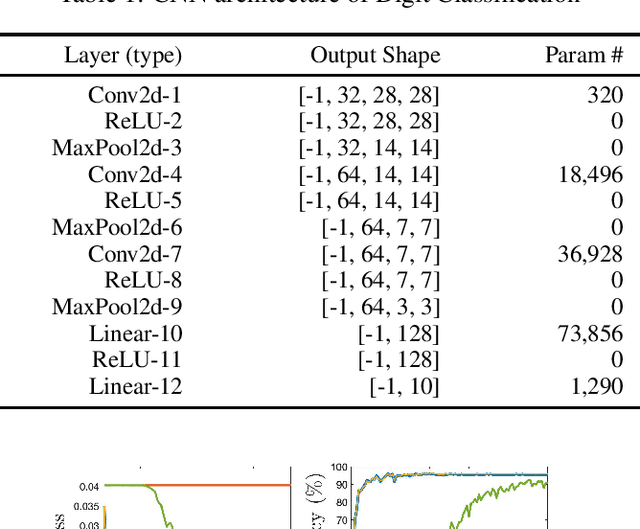


Distributed multi-task learning provides significant advantages in multi-agent networks with heterogeneous data sources where agents aim to learn distinct but correlated models simultaneously. However, distributed algorithms for learning relatedness among tasks are not resilient in the presence of Byzantine agents. In this paper, we present an approach for Byzantine resilient distributed multi-task learning. We propose an efficient online weight assignment rule by measuring the accumulated loss using an agent's data and its neighbors' models. A small accumulated loss indicates a large similarity between the two tasks. In order to ensure the Byzantine resilience of the aggregation at a normal agent, we introduce a step for filtering out larger losses. We analyze the approach for convex models and show that normal agents converge resiliently towards their true targets. Further, an agent's learning performance using the proposed weight assignment rule is guaranteed to be at least as good as in the non-cooperative case as measured by the expected regret. Finally, we demonstrate the approach using three case studies, including regression and classification problems, and show that our method exhibits good empirical performance for non-convex models, such as convolutional neural networks.
Detecting Adversarial Examples in Learning-Enabled Cyber-Physical Systems using Variational Autoencoder for Regression
Mar 21, 2020Feiyang Cai, Jiani Li, Xenofon Koutsoukos

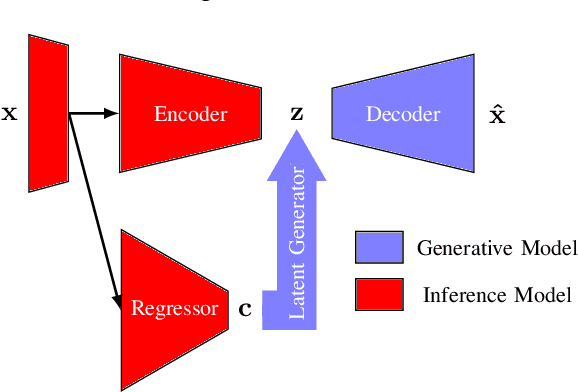


Learning-enabled components (LECs) are widely used in cyber-physical systems (CPS) since they can handle the uncertainty and variability of the environment and increase the level of autonomy. However, it has been shown that LECs such as deep neural networks (DNN) are not robust and adversarial examples can cause the model to make a false prediction. The paper considers the problem of efficiently detecting adversarial examples in LECs used for regression in CPS. The proposed approach is based on inductive conformal prediction and uses a regression model based on variational autoencoder. The architecture allows to take into consideration both the input and the neural network prediction for detecting adversarial, and more generally, out-of-distribution examples. We demonstrate the method using an advanced emergency braking system implemented in an open source simulator for self-driving cars where a DNN is used to estimate the distance to an obstacle. The simulation results show that the method can effectively detect adversarial examples with a short detection delay.
Trusted Confidence Bounds for Learning Enabled Cyber-Physical Systems
Mar 11, 2020Dimitrios Boursinos, Xenofon Koutsoukos
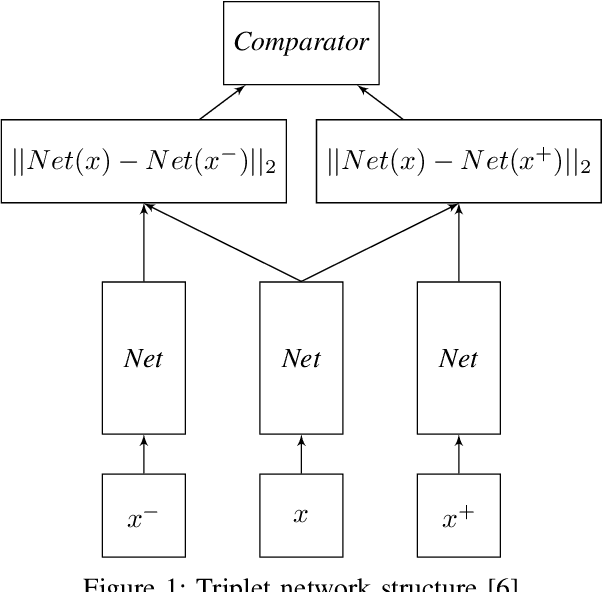
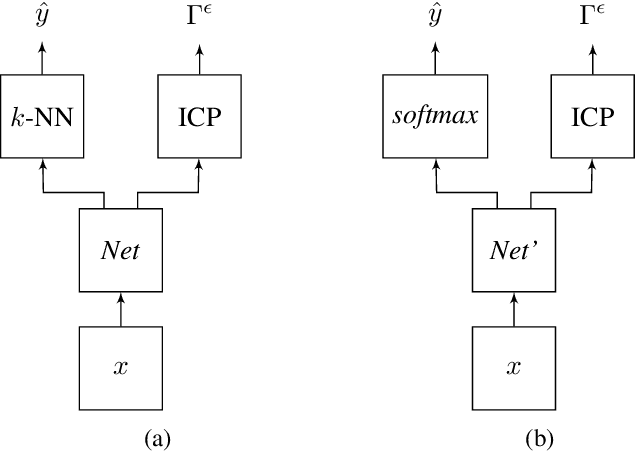
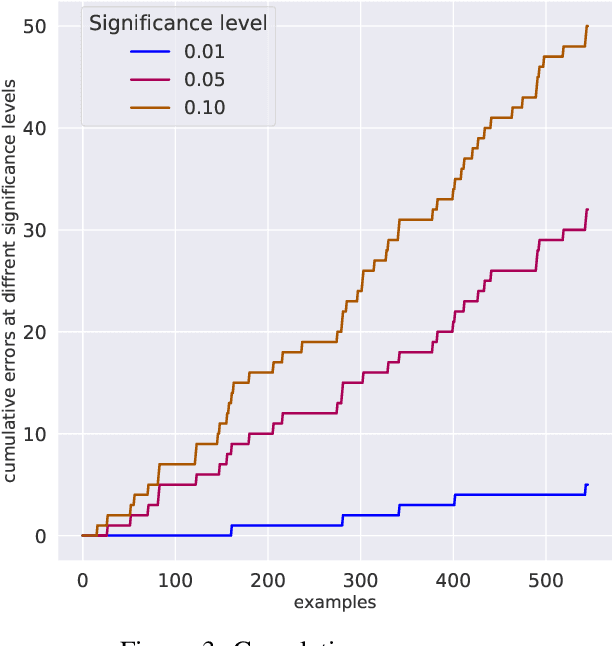
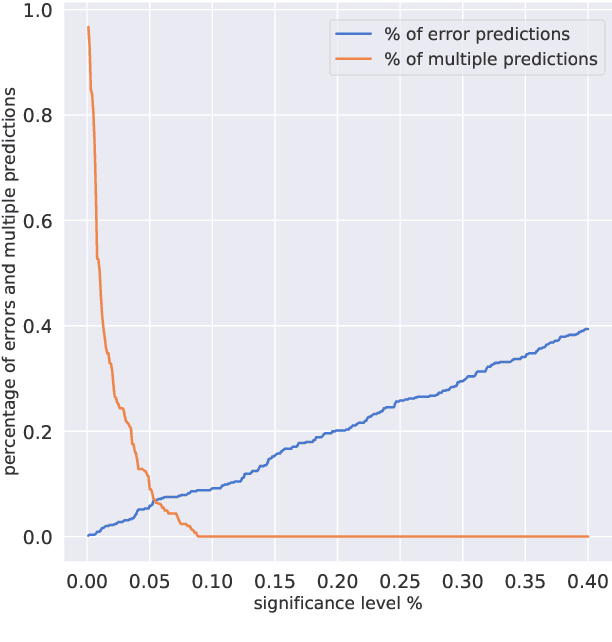
Cyber-physical systems (CPS) can benefit by the use of learning enabled components (LECs) such as deep neural networks (DNNs) for perception and desicion making tasks. However, DNNs are typically non-transparent making reasoning about their predictions very difficult, and hence their application to safety-critical systems is very challenging. LECs could be integrated easier into CPS if their predictions could be complemented with a confidence measure that quantifies how much we trust their output. The paper presents an approach for computing confidence bounds based on Inductive Conformal Prediction (ICP). We train a Triplet Network architecture to learn representations of the input data that can be used to estimate the similarity between test examples and examples in the training data set. Then, these representations are used to estimate the confidence of a set predictor based on the DNN architecture used in the triplet based on ICP. The approach is evaluated using a robotic navigation benchmark and the results show that we can computed trusted confidence bounds efficiently in real-time.
Real-time Out-of-distribution Detection in Learning-Enabled Cyber-Physical Systems
Jan 28, 2020Feiyang Cai, Xenofon Koutsoukos



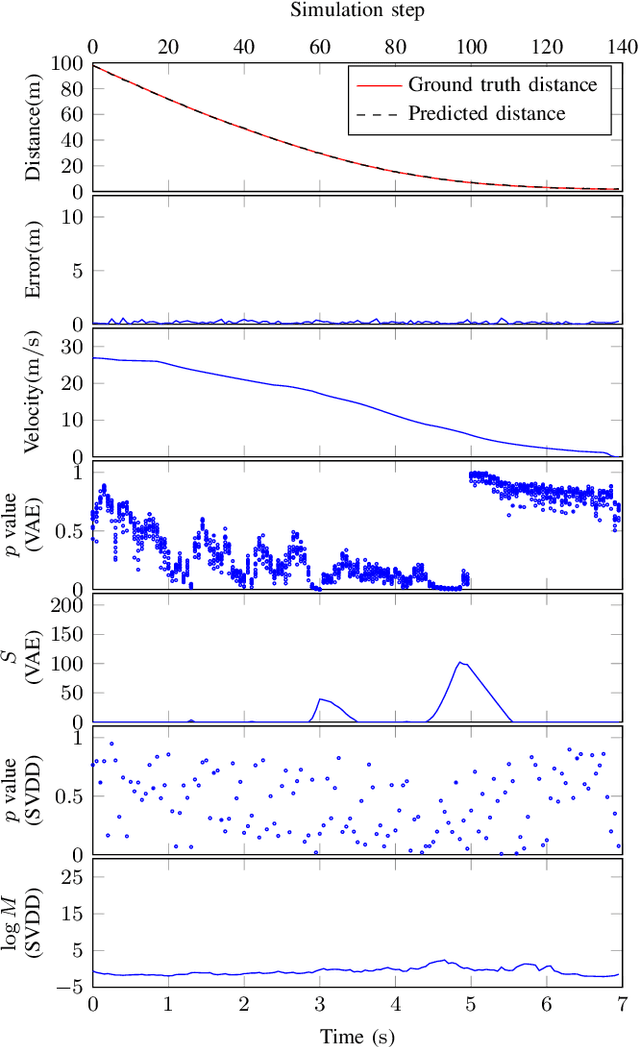
Cyber-physical systems (CPS) greatly benefit by using machine learning components that can handle the uncertainty and variability of the real-world. Typical components such as deep neural networks, however, introduce new types of hazards that may impact system safety. The system behavior depends on data that are available only during runtime and may be different than the data used for training. Out-of-distribution data may lead to a large error and compromise safety. The paper considers the problem of efficiently detecting out-of-distribution data in CPS control systems. Detection must be robust and limit the number of false alarms while being computational efficient for real-time monitoring. The proposed approach leverages inductive conformal prediction and anomaly detection for developing a method that has a well-calibrated false alarm rate. We use variational autoencoders and deep support vector data description to learn models that can be used efficiently compute the nonconformity of new inputs relative to the training set and enable real-time detection of out-of-distribution high-dimensional inputs. We demonstrate the method using an advanced emergency braking system and a self-driving end-to-end controller implemented in an open source simulator for self-driving cars. The simulation results show very small number of false positives and detection delay while the execution time is comparable to the execution time of the original machine learning components.
Assurance Monitoring of Cyber-Physical Systems with Machine Learning Components
Jan 14, 2020Dimitrios Boursinos, Xenofon Koutsoukos
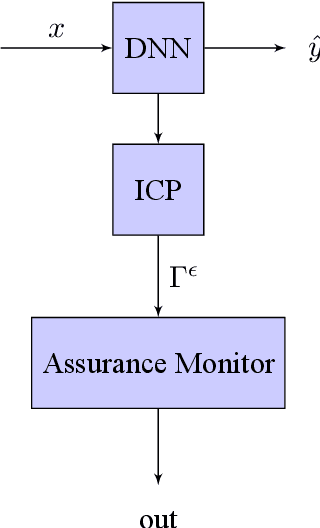
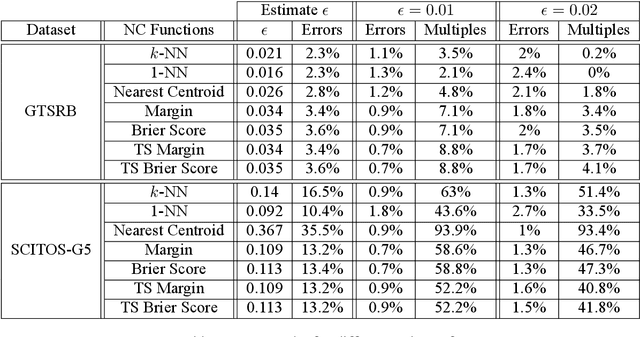
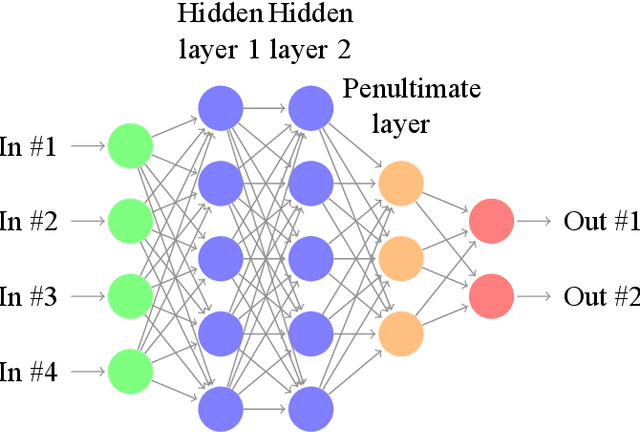
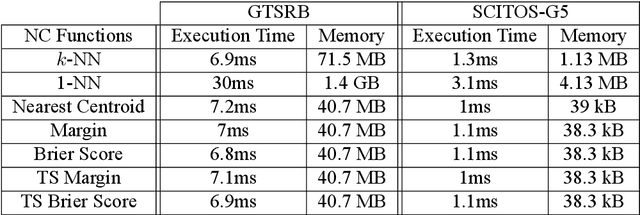
Machine learning components such as deep neural networks are used extensively in Cyber-physical Systems (CPS). However, they may introduce new types of hazards that can have disastrous consequences and need to be addressed for engineering trustworthy systems. Although deep neural networks offer advanced capabilities, they must be complemented by engineering methods and practices that allow effective integration in CPS. In this paper, we investigate how to use the conformal prediction framework for assurance monitoring of CPS with machine learning components. In order to handle high-dimensional inputs in real-time, we compute nonconformity scores using embedding representations of the learned models. By leveraging conformal prediction the approach provides well-calibrated confidence and can allow monitoring that ensures a bounded small error rate while limiting the number of inputs for which an accurate prediction cannot be made. Empirical evaluation results using the German Traffic Sign Recognition Benchmark and a robot navigation dataset demonstrate that the error rates are well-calibrated while the number of alarms is small. The method is computationally efficient, and therefore, the approach is promising for assurance monitoring of CPS.
Adversarial Regression for Detecting Attacks in Cyber-Physical Systems
Apr 30, 2018Amin Ghafouri, Yevgeniy Vorobeychik, Xenofon Koutsoukos
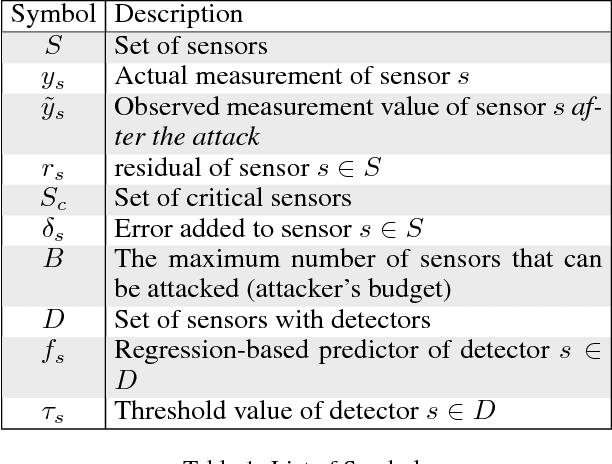
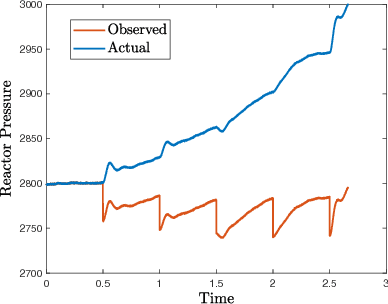

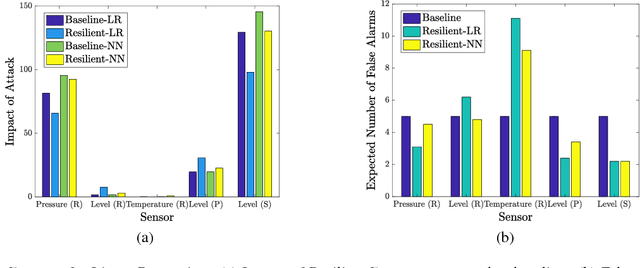
Attacks in cyber-physical systems (CPS) which manipulate sensor readings can cause enormous physical damage if undetected. Detection of attacks on sensors is crucial to mitigate this issue. We study supervised regression as a means to detect anomalous sensor readings, where each sensor's measurement is predicted as a function of other sensors. We show that several common learning approaches in this context are still vulnerable to \emph{stealthy attacks}, which carefully modify readings of compromised sensors to cause desired damage while remaining undetected. Next, we model the interaction between the CPS defender and attacker as a Stackelberg game in which the defender chooses detection thresholds, while the attacker deploys a stealthy attack in response. We present a heuristic algorithm for finding an approximately optimal threshold for the defender in this game, and show that it increases system resilience to attacks without significantly increasing the false alarm rate.
Optimal Detection of Faulty Traffic Sensors Used in Route Planning
Mar 16, 2017Amin Ghafouri, Aron Laszka, Abhishek Dubey, Xenofon Koutsoukos
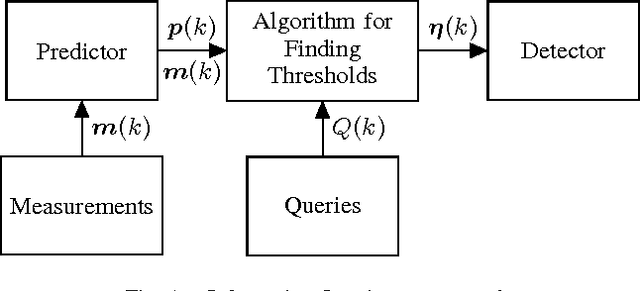
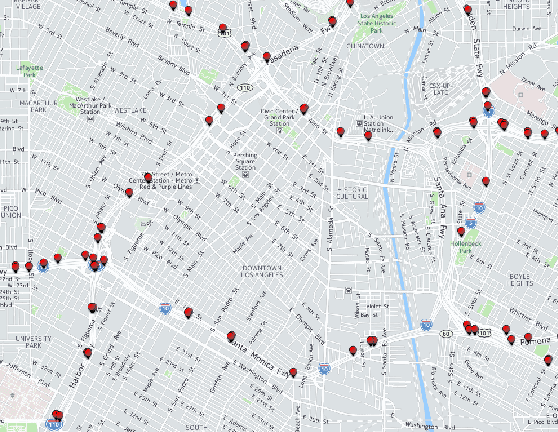
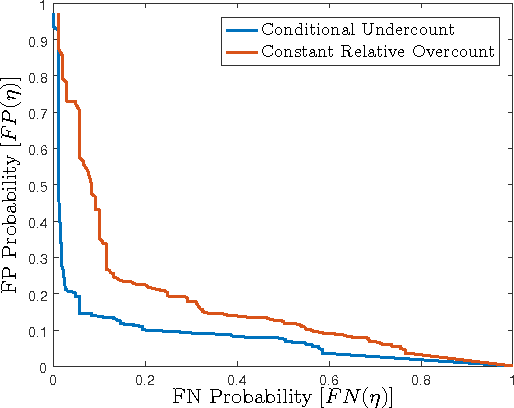
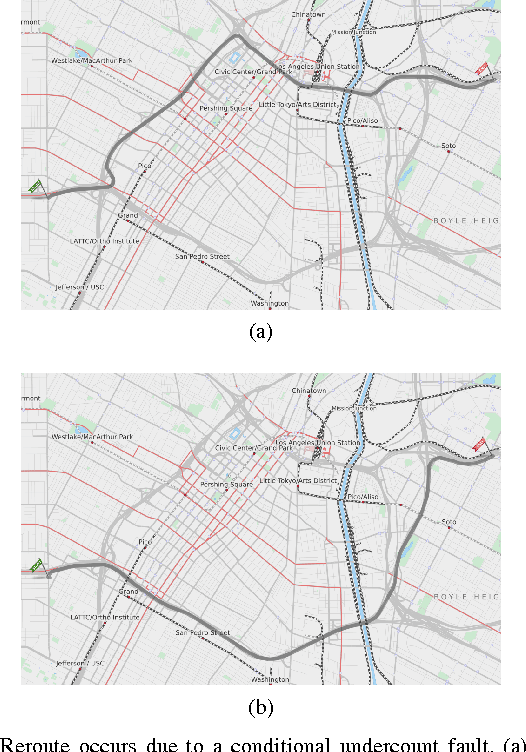
In a smart city, real-time traffic sensors may be deployed for various applications, such as route planning. Unfortunately, sensors are prone to failures, which result in erroneous traffic data. Erroneous data can adversely affect applications such as route planning, and can cause increased travel time. To minimize the impact of sensor failures, we must detect them promptly and accurately. However, typical detection algorithms may lead to a large number of false positives (i.e., false alarms) and false negatives (i.e., missed detections), which can result in suboptimal route planning. In this paper, we devise an effective detector for identifying faulty traffic sensors using a prediction model based on Gaussian Processes. Further, we present an approach for computing the optimal parameters of the detector which minimize losses due to false-positive and false-negative errors. We also characterize critical sensors, whose failure can have high impact on the route planning application. Finally, we implement our method and evaluate it numerically using a real-world dataset and the route planning platform OpenTripPlanner.
 Add to Chrome
Add to Chrome Add to Firefox
Add to Firefox Add to Edge
Add to Edge